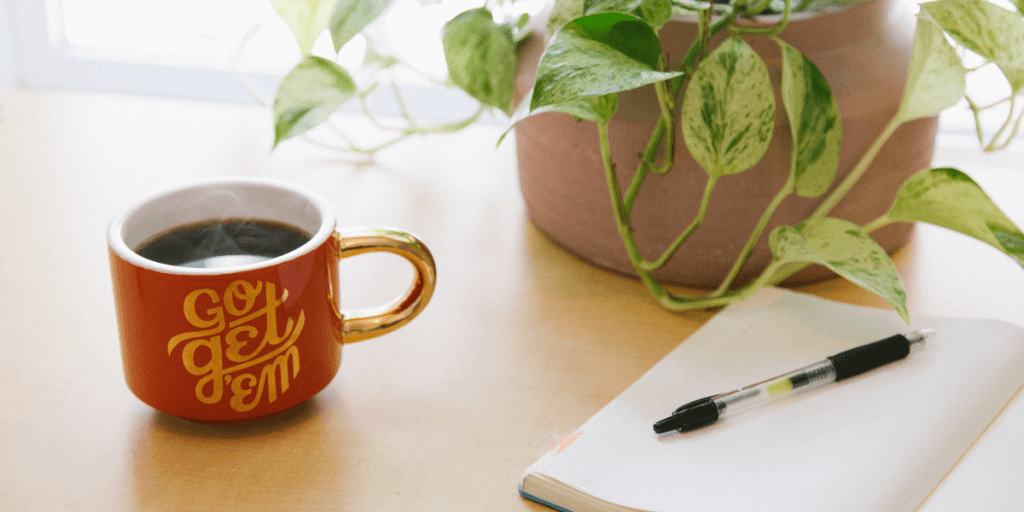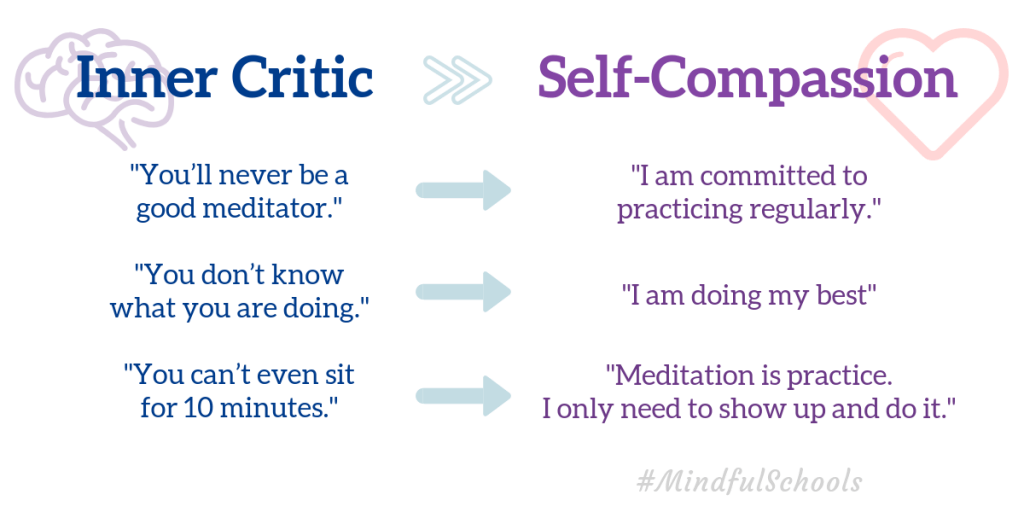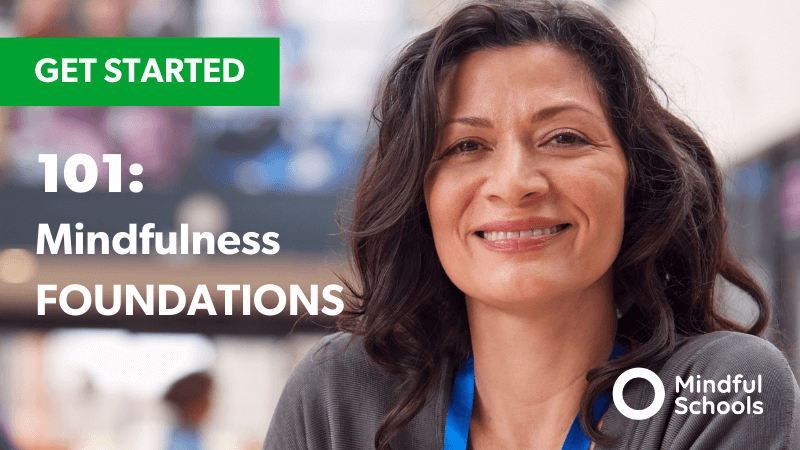
We all know about the benefits of mindfulness. But then why is it so hard to start (and stick to) a regular practice? Erin Woo shares some helpful tips on how to get out of your head and onto your cushion.
Hello, I’m Erin Woo, a guiding teacher with the Mindful Schools Mindful Teacher Certification Program. I want to talk about some ideas for helping yourself practice when you’re having a difficult time with it.
You can listen to this audio talk or read the transcript below:
I’ll tell you a secret. When I first started meditating, I didn’t like it all that much. I stuck with it because my first experience meditating was life changing and because I believed it would be helpful in my life, but it took quite a while before I warmed up to it more and practiced regularly. But what I want to say about that is that those early years of sometimes practicing got me to where I am now.
Just having the intention and desire to meditate will carry you through on some level. We’re a few weeks into the new year which makes it a really good time to talk about this. Maybe you thought you would be more on track with meditation than you are. This is ok. It’s perfectly fine.
You can start again today, tomorrow, next week… This starting again is what we do all the time in meditation. We sit down to bring our attention to our breath, or other object, we notice the mind has wandered, and we start again. We bring our attention to our breath. The key is we do this with kindness and non-judgment. And this is the key with daily practice as well. When we forget to practice, or we don’t get around to it, or we choose not to practice, we start again with kindness and non-judgment when we’re ready.
First, bring compassion to yourself.
The very first place to begin when you’re having trouble getting yourself to practice is with compassion for yourself. It’s clear that you have some desire to meditate. You’re listening to this talk, but you might be having a tough time doing it. Rather than beating yourself up over it, it’s important to bring compassion to yourself.
“I’m doing my best. I’m trying.”
There are countless circumstances throughout life have brought you this particular point in your life. Many of these circumstances were and are beyond your control, but none-the-less they have a strong hand in shaping your actions (or inactions). Whatever they are, they’re beyond your control. So compassion is called for. “It’s ok. I’ll keep trying.”
Be wary of the inner critic.
Another side of having compassion for yourself is keeping your inner critic in check. You might notice if you have an inner voice that is critical of your struggle to meditate. “You’ll never be a good meditator. You don’t know what you are doing.” “You can’t even sit for 10 minutes.”
Be on the alert for this inner critic. It is incredibly easy to believe the things it tells you without even realizing that you are listening to it. That voice can be so strong, that even when we are aware of it, it can be hard not to believe it.
“Failure is a feeling long before it becomes an actual result.”
– Michelle Obama
In her memoir, Becoming, Michelle Obama writes, “Failure is a feeling long before it becomes an actual result.” I love those words. Be wary of the words of this inner critic. We’re not the failure we think we are. We can replace those thoughts with alternative ones.

And just a note about this for those who really do believe the thoughts of the inner critic. It can be hard to replace these thoughts with others when we believe them. Many of us have been hard on ourselves for so long that it’s difficult to separate ourselves from our inner critic. So just to acknowledge that replacing these thoughts with others is a practice in itself. I encourage you to do whatever you can, in whatever form to change these thoughts as they arise. Over time, it will get easier. Be vigilant.
Here are more ideas to create time and space to help yourself practice.
1) Creating a space for yourself. Consider setting up a space specifically for your meditation. You can pick a particular chair or a meditation cushion and maybe you have a few things right nearby–maybe a beautiful plant, a picture that has meaning to you, a quote, objects from nature, anything that might help you help signify to you that you’re in a special place, that something different is happening there.
Article continues below
Take the first step to bring mindfulness to your school: Learn the science of mindfulness and simple yet powerful strategies to bring mindfulness into daily life to manage stress and burnout, and build resilience.
2) Create the time. Here are some ways you can think about the time you set aside for mindfulness practice.
* Set a reasonable time. Pick a time frame that seems doable, not one that you “should” be doing. If you are trying to meditate for 20 minutes every day and never really get around to it because it’s too much time, it feels overwhelming. Maybe 15 minutes or 10 or 5 minutes is the right amount of time for you right now.
It’s much better to meditate for five minutes a day than to never meditate for twenty minutes a day. You can slowly build up over time–maybe five minutes this week, and then ten the next. Or maybe you stick with five minutes for a month. It’s up to you and it’s really what’s working for you. If it becomes too overwhelming, you can make adjustments.
* Do you have just 2 minutes? I just recently came across an article about the two-minute way of creating a habit. I love this idea from James Clear. Whatever habit you’re trying to create, you don’t actually do it for the first month! You just go to the place where you want to initiate that habit and you spend two minutes there, and then you move on. The example is of a man who wanted to start working out at a gym. He drove himself to the gym, went in for two minutes, and left and went to work. He did that everyday for a month. Kind of a silly thing going to a gym when you’re not going to work out, but it was what he needed to do. He’d gotten into this habit. The next month he was ready to start working out.

* Establish a particular time of day. It doesn’t matter what time of day it is and you can play around with what works best for you. For a lot of people, first thing in the morning is really effective. If you’re a teacher, it could be right when you get to school. Maybe it’s the first thing you do after lunch or when you get home from work or right before bed.
I meditate first thing in the morning. This was something I initiated early on when I was trying to track practice because I saw quickly that when I didn’t do it first thing, it was really easy for me to put it off. “Oh, I’ll do it later,” and that later never happened because at the end of the day I was tired and I wanted to go to sleep.
You can also tie it to something. After you take a shower, after you walk the dog. You’re tying it into a habit you already have, so it kind of follows logically.
3) Track your meditation. There’s some research to show that keeping track of habits actually helps you do the things you say you want to do. There are apps such as Insight Timer, which will track every day how much time you meditate. Analog is also great, the old pen and paper, making a chart with each day of the month and just putting a smiley face in each little box to indicate that you meditated on that day.
4) Visualize. Even before you get to the meditation space that you’ve created, you can imagine yourself walking toward that space, sitting down on your chair or cushion, adjusting your posture, closing your eyes and sitting down to meditate. You can imagine what it will feel like when you’ve completed your meditation. Some people find that visualizing it first actually helps them follow through rather than getting tangled up in the thoughts of, “I don’t feel like doing it.”
Finally, return to bringing kindness to yourself.
The last thing we want to do is to make meditation something else that we’re not good at or fall short of. Kindness and compassion are actually the bedrock of mindfulness. I notice in my own practice that when I am listening to my inner critic, it becomes more difficult to sit. My mind wanders a lot and I tend to feel restless. Often, just by bringing compassion to myself, my mind and body relax.
Building up a meditation practice takes time and a lot of kindness and compassion. I’m wishing you kindness and compassion as you continue to hold this whole hearted intention of meditation. And really, this intention, this desire to meditate, will carry you forward much further than any act of will or effort.
Thank you for listening and good luck to you.

